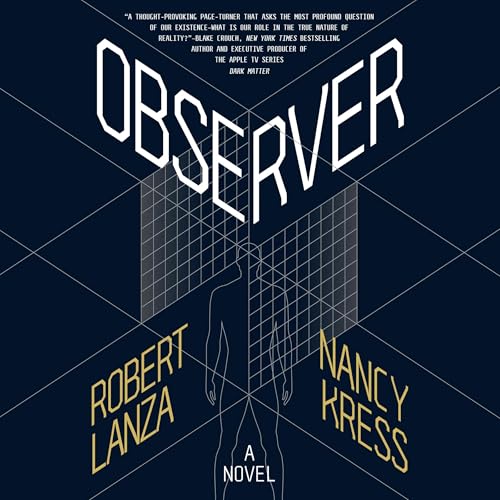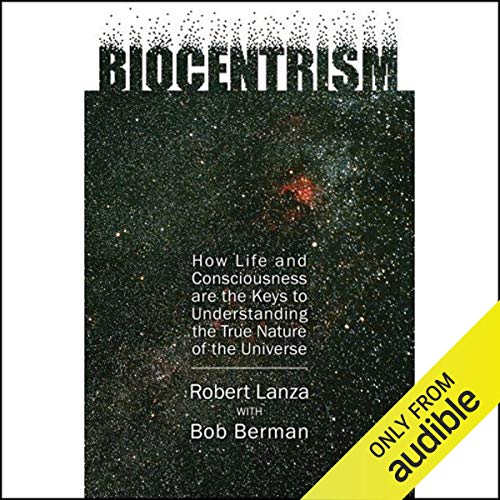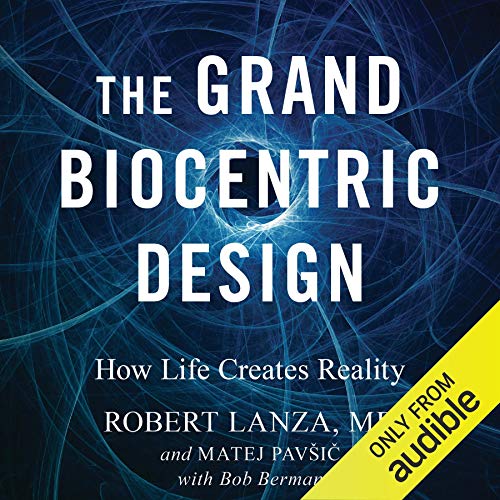
You're getting a free audiobook.
You're getting a free audiobook.
Best Sellers
-
-
Observer
- A Novel
- By: Robert Lanza, Nancy Kress
- Narrated by: Stacey Glemboski
- Length: 13 hrs and 12 mins
- Unabridged
-
Overall5 out of 5 stars 2
-
Performance5 out of 5 stars 1
-
Story5 out of 5 stars 1
After neurosurgeon Caro Soames-Watkins’ career has gone down in flames, she receives a strange job offer from Nobel Prize-winning scientist Sam Watkins, a great uncle she barely knows, and desperation overcomes any suspicions.
-
Observer
- A Novel
- Narrated by: Stacey Glemboski
- Length: 13 hrs and 12 mins
- Release date: 09-16-24
- Language: English
Failed to add items
Sorry, we are unable to add the item because your shopping cart is already at capacity.Add to Cart failed.
Please try again laterAdd to Wish List failed.
Please try again laterRemove from wishlist failed.
Please try again laterAdding to library failed
Please try againFollow podcast failed
Please try againUnfollow podcast failed
Please try againRegular price: $20.24 or 1 credit
Sale price: $20.24 or 1 credit
-
-
-
Beyond Biocentrism
- Rethinking Time, Space, Consciousness, and the Illusion of Death
- By: Robert Lanza, Bob Berman
- Narrated by: Peter Ganim
- Length: 7 hrs and 16 mins
- Unabridged
-
Overall4.5 out of 5 stars 688
-
Performance4.5 out of 5 stars 601
-
Story4.5 out of 5 stars 591
In Beyond Biocentrism, acclaimed biologist Robert Lanza and astronomer Bob Berman take the listener on an intellectual thrill ride....
-
5 out of 5 stars
-
Here's the thing
- By Mikal on 11-09-18
-
Beyond Biocentrism
- Rethinking Time, Space, Consciousness, and the Illusion of Death
- Narrated by: Peter Ganim
- Length: 7 hrs and 16 mins
- Release date: 04-18-17
- Language: English
Failed to add items
Sorry, we are unable to add the item because your shopping cart is already at capacity.Add to Cart failed.
Please try again laterAdd to Wish List failed.
Please try again laterRemove from wishlist failed.
Please try again laterAdding to library failed
Please try againFollow podcast failed
Please try againUnfollow podcast failed
Please try againRegular price: $19.95 or 1 credit
Sale price: $19.95 or 1 credit
-
-
-
Biocentrism
- How Life and Consciousness are the Keys to the True Nature of the Universe
- By: Robert Lanza, Bob Berman
- Narrated by: Peter Ganim
- Length: 6 hrs and 32 mins
- Unabridged
-
Overall4.5 out of 5 stars 1,059
-
Performance4.5 out of 5 stars 851
-
Story4.5 out of 5 stars 839
Biocentrism awakens a new sense of possibility and is full of so many shocking new perspectives that the listener will never see reality the same way again....
-
5 out of 5 stars
-
The Copenhagen Interpretation Resurrected
- By S. Kozlowski on 12-14-09
-
Biocentrism
- How Life and Consciousness are the Keys to the True Nature of the Universe
- Narrated by: Peter Ganim
- Length: 6 hrs and 32 mins
- Release date: 10-13-09
- Language: English
Failed to add items
Sorry, we are unable to add the item because your shopping cart is already at capacity.Add to Cart failed.
Please try again laterAdd to Wish List failed.
Please try again laterRemove from wishlist failed.
Please try again laterAdding to library failed
Please try againFollow podcast failed
Please try againUnfollow podcast failed
Please try againRegular price: $19.95 or 1 credit
Sale price: $19.95 or 1 credit
-
-
-
The Grand Biocentric Design
- How Life Creates Reality
- By: Robert Lanza, Matej Pavšič
- Narrated by: Peter Ganim
- Length: 8 hrs and 18 mins
- Unabridged
-
Overall4.5 out of 5 stars 291
-
Performance4.5 out of 5 stars 244
-
Story4.5 out of 5 stars 240
The Grand Biocentric Design is a one-of-a-kind, groundbreaking explanation of how the universe works and an exploration of the science behind the astounding fact that time, space, and reality itself all ultimately depend upon us....
-
2 out of 5 stars
-
Should be in the fiction section.
- By Frank on 12-29-20
-
The Grand Biocentric Design
- How Life Creates Reality
- Narrated by: Peter Ganim
- Length: 8 hrs and 18 mins
- Release date: 11-17-20
- Language: English
Failed to add items
Sorry, we are unable to add the item because your shopping cart is already at capacity.Add to Cart failed.
Please try again laterAdd to Wish List failed.
Please try again laterRemove from wishlist failed.
Please try again laterAdding to library failed
Please try againFollow podcast failed
Please try againUnfollow podcast failed
Please try againRegular price: $19.95 or 1 credit
Sale price: $19.95 or 1 credit
-













